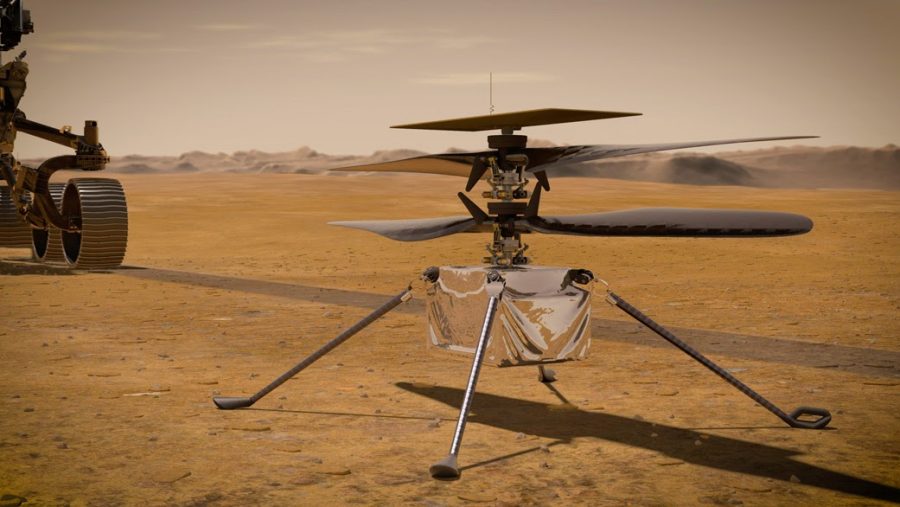Ingenuity’s First Flight
National Aeronautics and Space Administration
NASA’s new Mars helicopter, Ingenuity, successfully completed its first flight on April 19.
April 23, 2021
On Monday, April 19, 2021, at around 3:34 a.m. Eastern Time, history was made. NASA confirmed that its Mars helicopter, Ingenuity, successfully completed its first flight around 3 hours afterwards. Along with Ingenuity was a rover, Perseverance, that had landed on Mars a month earlier, on February 18, 2021. Perseverance was located 65 meters away from the helicopter, while overlooking the flight to take pictures and videos. The flight itself lasted a total of 40 seconds. Together, those space machines made history, but there were some bumps along the way.
Although Ingenuity was scheduled to take its first flight a week before, complications arose. While doing preflight checks with the software on April 11, NASA scientists recognized command sequence issues. By April 16, the team at NASA was able to change the software, ensuring successful completion of the rapid spin tests. From there, Ingenuity was ready to make its solo trip to Mars, without the assistance of teams on Earth.
Among the factors that complicate flight on Mars are its differences in gravity and atmospheric pressure. MiMi Aung, a project manager for Ingenuity at the NASA’s Jet Propulsion Lab in Pasadena, CA, explained that “Mars is hard not only when you land, but when you try to take off from it and fly around, too,” because “It has significantly less gravity, but less than 1% the pressure of our atmosphere at its surface.” Because of all these factors, not one input can even be slightly off.
The historic flight of Ingenuity reminds many of the first flight on Earth: the airplane of the Wright brothers. Aung goes on to say, “We’ve been talking about our Wright brothers’ moment on another planet for so long. And now, here it is.” Beneath the helicopter’s solar pane, Ingenuity carried a small piece of the muslin fabric that was on the wings of the Wright brothers’ Flyer 1. This historic moment, 117 years after the Wright brothers’ first flight, reminds one of the strides in technology that have taken place over the past century.
Looking into the future, flights will get shorter and Ingenuity is expected to take on many more flights. The flights could potentially reach lateral movements 15 meters out and back and heights around 5 meters high. Aung mentions that “Once we get to the fourth and fifth flights, we’ll have fun,” and that “We really want to push the limits. It’s not every day that you get to test a rotorcraft on Mars. So we want to be very adventurous.” As the next two weeks pass by, experiments will take place, limits will be pushed, and more historic strides will be made.


